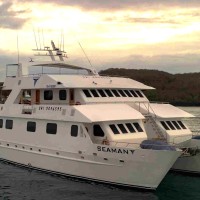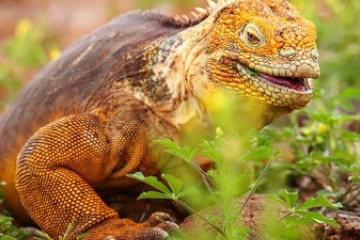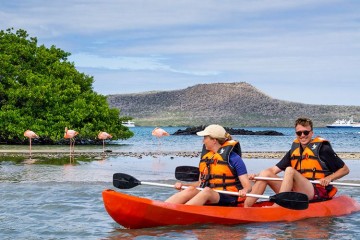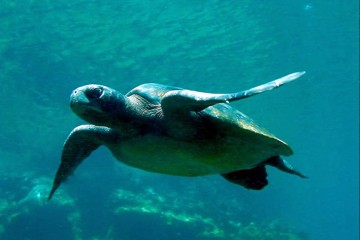Galapagos: Seaman Journey | 7 days
Tour Overview
Sail across the clear waters of this stunning and unique ecosystem on this 7-day Galapagos cruise aboard M/C Seaman Journey.
Embark on an unforgettable 7-day cruise through the breathtaking volcanic landscapes and unique ecosystems of the western Galapagos Islands, including Isabela and Fernandina. Dive into adventure with activities like snorkeling alongside marine iguanas, hiking across stunning lava fields, and spotting rare wildlife such as flightless cormorants and Galapagos penguins. Explore the archipelago's youngest and most volcanically active islands, offering a perfect blend of adventure and up-close encounters with nature's wonders.
You can snorkel from Espumilla Beach, the soft beach that emulates “foam” with playful sea lions, white tipped-reefsharks, sea turtles, manta rays and reef fish. Look for seahorses, sea turtles, and Mola-mola (sunfish) at Vicente Roca Point, observe a colony of flamingos on Rabida Island and more.
Enjoy all the sites by dinghy excursions, on hikes, kayaking or swimming and snorkelling. Relax in comfort onboard the Seaman Journey as we navigate between islands and learn more about the fascinating natural world of the Galapagos National Park from our expert guide.
Viva's Best Bits...
"A great itinerary to spot whales, manta rays and dolphins. Keep your eyes open when you sail the chancel between Isabela and Fernandina. Best time Jun - Nov." Pia, Team Viva
Walk on the ropy texture of the thousand year old pahoehoe lava flow, watch out for lava lizards, birds and lava cactus.
Vicente Roca Point is one of the best places to snorkel and well know for its spectacular marine life.



